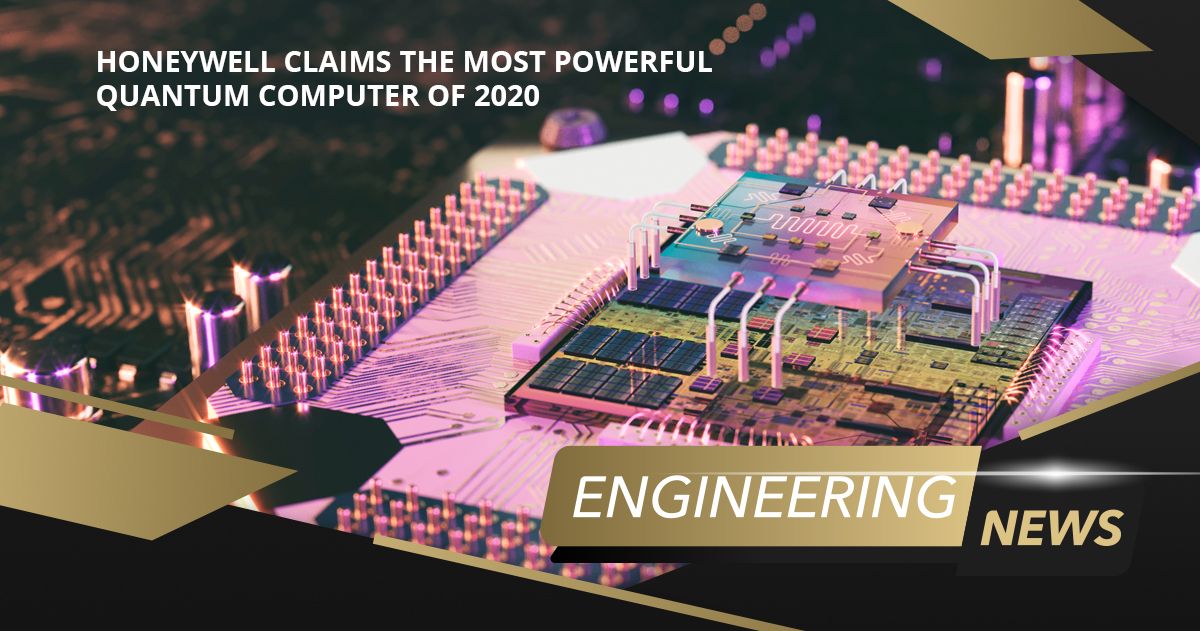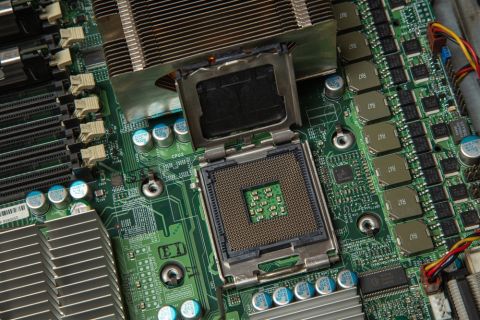Honeywell Claims the Most Powerful Analog Quantum Computer of 2020

If you pay attention to electronics and photonics industry publications, 2020 seems to be the year of quantum computing. Companies ranging from IBM to Intel have sunk vast sums of money into developing proprietary technology for their quantum computing platforms. There are plenty of foreign competitors (especially in China). The research landscape tends to focus on scale, error rate, algorithms, and materials in the development of quantum computers.
A particular company that is not generally known for high powered computing, and especially is not associated with quantum computing, claims to have the most powerful quantum computer as of 2020. That company is Honeywell, perhaps best known for its security systems. What makes their quantum computer so powerful, and what does this tell the broader electronics community about the outlook on quantum computing? The answer is not surprising to a computer science expert, but it reflects how the news media often sensationalizes quantum computing and how we think about computing power in general.
What Makes Honeywell’s Quantum Computer So Great?
When some folks talk about quantum computing, they tend to focus only on qubit count. There is a valid reason for this as qubit count is used to distinguishing three fundamental types of quantum computing:
Quantum annealing. This is the quantum analog of simulated annealing algorithms used in optimization problems. Therefore, this type of quantum computer is believed to only be valuable for high-dimensional optimization problems, but may not have other uses beyond this. It can perform the same optimization tasks as a classical computer system, but with potentially less parallelization if the qubit count is high enough. Qubit Count: up to 50.
Analog quantum computing. An analog quantum computer aims to create true simulations of quantum systems, confronting the great challenge in classical computing articulated by Richard Feynman. These systems enable simulation applications in nanotechnology, drug discovery, and a host of other areas. Qubit Count: ~100.
General-purpose quantum computing: This is the real goal of quantum computing development. These systems are intended to run any algorithm, just like a desktop computer; they are quantum analogs of digital computers. Qubit Count: thousands.
Qubit count is important, but consider the case of a digital computer or any other digital system. The critical metric in these systems is not just a transistor count. Things like processor speed, error count, and memory are other benchmarks that signify a digital computer’s power. The same ideas apply to quantum computers as well.
The new announcement from Honeywell is the development of a quantum computer with only 6 qubits. Compare this to other quantum computers, such as the 53 qubit processor by IBM, which MIT Technology Review heralded as the most powerful system in 2019. So what makes Honeywell’s system so great, despite the lower qubit count?
Quantum Volume
The benchmark measurement for the computing power of a quantum computer is its quantum volume. This figure of merit combines the number of physical qubits, how interconnected they are, and the average error rate they experience during computation. This is not a simple formula; it’s a tensor calculation that considers the gate depth in the system alongside the error rate across the entire qubits group in a quantum circuit. You can read more about this calculation from qiskit.org.
Honeywell’s system only has 6 qubits, but its quantum volume is 64, whereas IBM’s 53 processor has only 32. Despite the lower number of qubits, the Honeywell system has greater confinement from the surrounding environment. This is critical as interaction with the surrounding environment causes decoherence in a quantum system, which corrupts the system’s quantum state before a calculation completes producing an error. The design of microwave systems for quantum measurement and coherent control of qubits remains a major research topic in quantum computing.
So how does the Honeywell system do this? In the Honeywell system, ytterbium ions are confined in a microscopic channel etched into a chip. The spin state of the ion points along a definite direction, which is used to store information. The ion is trapped within this channel using a highly coherent electromagnetic field in the high GHz range.

The ion trap chip is further separated from the environment by being placed in a vacuum chamber. This chip then cooled down to a very low temperature so that thermal noise does not cause decoherence in the ion’s quantum state. This new design allows the quantum state’s coherence to last on the order of seconds on average, allowing multiple read and write operations to be performed. This allows the execution of logic statements in quantum algorithms. Honeywell plans to offer this system to other companies as a service, which can then be accessed via the cloud.
What’s Next For Quantum Computing?
By increasing the coherence time, the random error rate is reduced to a level that allows the system to be interrogated before the quantum state is “absorbed” into the environment. This should illustrate one of the many challenges remaining in perfecting quantum computing:
- Qubit scaling. This refers to down-scaling the size of qubits and up-scaling the number of qubits. At present, the team at Honeywell claims to use a massively scalable qubit architecture.
- Error rate reduction. In addition to better isolation to extend the coherence time, quantum error correction algorithms are critical to increasing the system’s quantum volume. Note that these techniques cannot rely on redundancy using entangled states.
- Quantum clocks. Generating a quantum clock signal is a vital microwave photonics topic related to mode comb generation in radio-over-fiber. Micro mode combs would be fed directly into a quantum integrated circuit and other inputs, just as is done in an integrated circuit.
- Practical quantum components. This is where true commercialization begins and where quantum PCB designers will meet with quantum IC designers. We still don’t know what this will look like. Still, organizations like the Quantum Economic Development Consortium (QED-C) are working to address standardization so that designers can better understand how quantum systems can be designed from modular components.
The last point above is by far the most interesting for PCB designers, as we would now be in a realm that resembles classic PCB design. It will be interesting to see what comes next in the world of quantum computing in the near future and how PCBs will evolve to accommodate technologies like quantum components, embedded optical interconnects, silicon photonics, and others we have yet to conceive.
Whether you want to design the next most powerful quantum computer of 2020 or you’re innovating in any other area of electronics, the design tools in Altium Designer® help you design powerful new technology. Designers and layout engineers will have access to a complete set of tools for designing PCBs for any application. In the realm of quantum computing, this encompasses everything from refrigeration to control systems and microwave systems.
Now you can download a free trial of Altium Designer and learn more about the industry’s best layout, simulation, and production planning tools. Talk to an Altium expert today to learn more.









